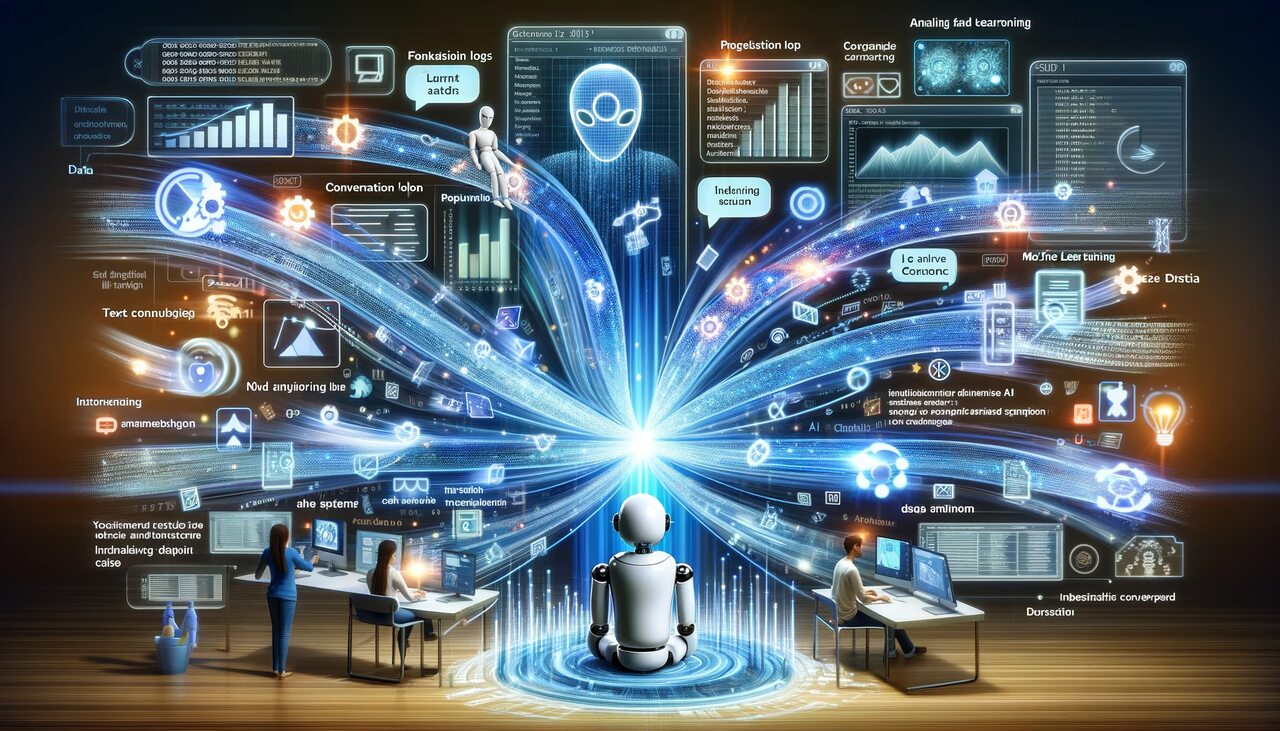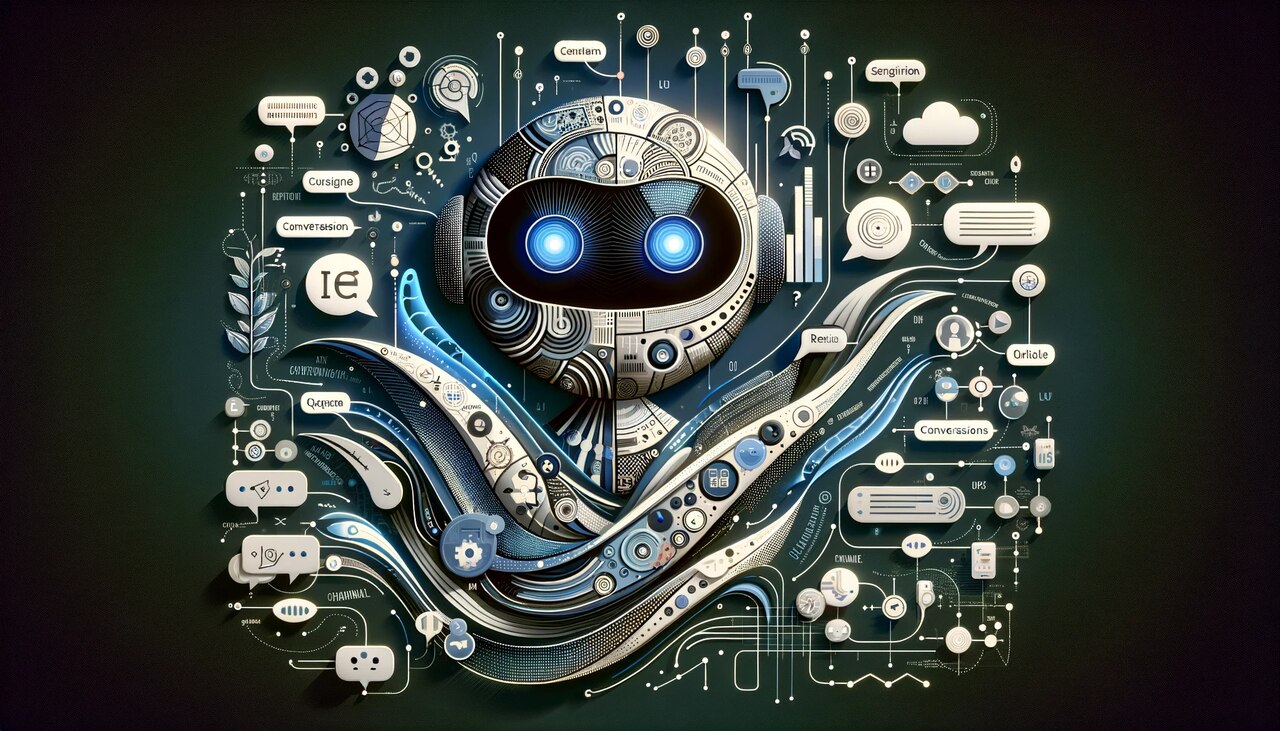
Self Learning AI Chatbot: The Primary Guide (2024)
Self learning AI chatbots help people improve their working system.
The most important of self learning chatbots is to learn from user interactions, refining their knowledge base and response capabilities.
In this article, we will take a look at a wide overview to what self-learning AI bots and importnat details are!
What is a Self-Learning Chatbot?
A self-learning chatbot is a sophisticated form of artificial intelligence (AI) designed to improve its performance and responses over time.
Unlike traditional chatbots, which rely on predefined rules and responses, self-learning chatbots utilize machine learning (ML) and natural language processing (NLP) to learn from interactions and adapt accordingly.
This enables them to understand context, interpret nuances in language, and provide more accurate and relevant responses.
Why Do People Prefer a Self-Learning AI Chatbot?
Improved Accuracy
Self-learning chatbots continuously refine their knowledge base and understanding through each interaction.
This ongoing learning process significantly enhances their accuracy in understanding and responding to user queries, leading to more effective and reliable communication.
Personalization
These chatbots excel in personalizing conversations by remembering past interactions and preferences.
This level of personalization fosters a more engaging user experience, making interactions feel more human and less like talking to a machine.
Dynamic and Natural Conversations
With the ability to learn and adapt, self-learning chatbots can participate in dynamic and natural conversations.
They can understand various speech patterns slang, and even detect sentiment, making interactions more fluid and less robotic.
Continuous Improvement
One of the most significant advantages of self-learning chatbots is their capacity for continuous improvement.
Every interaction serves as a learning opportunity, enabling the chatbot to become more sophisticated and efficient over time.

Efficiency and Availability
These chatbots are available 24/7, providing instant responses to queries.
This round-the-clock availability and efficiency make them invaluable in customer support and service roles, ensuring no customer query goes unanswered, regardless of the time.
Increased Efficiency and Cost Savings
A self-learning chatbot can increase operational efficiency and significant cost savings.
Automating responses and handling numerous queries simultaneously reduces the need for a large customer service team, saving on labor costs and resources.
Scalability and Deployment
Self-learning chatbots are highly scalable and capable of handling a surge in queries without compromising on response quality or speed.
This scalability makes them ideal for businesses of all sizes, ensuring customer engagement doesn't suffer during peak periods.
Additionally, their flexibility allows for easy integration and deployment across various platforms and industries.
Concepts of AI and Self Learning in Chatbot
→ Using AI for Self-Learning Chatbot
Artificial Intelligence (AI) is the backbone of self-learning chatbots. It involves using algorithms and neural networks to mimic human intelligence, enabling chatbots to understand, interpret, and respond to user queries. AI allows chatbots to process natural language, recognize patterns, and make decisions, resulting in more intuitive and human-like interactions.
→ Feeding Data to Machine Learning
Machine Learning (ML), a subset of AI, is crucial for the self-learning capabilities of chatbots. Feeding data to ML algorithms involves inputting vast amounts of conversation logs, text data, and user interactions. This data acts as the training material for the chatbot, helping it to learn from past conversations, understand context, and improve its response accuracy over time.

→ Making a Self-Learning Chatbot in Python
Python, with its simplicity and powerful libraries, is a popular choice for building self-learning chatbots. Python's frameworks and tools, such as TensorFlow, Keras, and NLTK, provide the necessary capabilities to process language, build neural networks, and develop learning algorithms. The process involves defining the chatbot's architecture, training it on relevant data, and continuously updating its learning models.
→ Flexibility and Extensibility with AI
AI provides immense flexibility and extensibility in chatbot development. It allows for the integration of various functionalities like sentiment analysis, language translation, and voice recognition. This flexibility enables chatbots to be tailored to specific industries and use cases, ranging from customer service to healthcare and finance.

→ Wide Range of Libraries in AI
The AI ecosystem is rich with libraries and frameworks that facilitate the development of sophisticated chatbots. Libraries like Scikit-learn for machine learning, PyTorch for deep learning, and Gensim for natural language processing provide developers with an extensive range of tools to build, train, and deploy self-learning chatbots.
→ Robust Machine Learning Support
Robust machine-learning support is vital for the effectiveness of self-learning chatbots. Advanced ML algorithms enable chatbots to analyze large datasets, learn from new inputs, and make data-driven decisions. This support is essential for chatbots to adapt to new trends, user behaviors, and evolving languages, ensuring they remain relevant and efficient over time.
Designing a Self Learning AI Chatbot
Define the Purpose and Scope of Your Chatbot
The initial step in designing a self-learning AI chatbot is to clearly define its purpose and scope. This involves understanding the specific needs it will address, such as customer support, sales, information dissemination, or personal assistance.
Determining the scope involves deciding on the chatbot's capabilities, the extent of its knowledge base, and the complexity of tasks it can handle. This clarity guides the design and development process, ensuring the chatbot meets its intended objectives.
Choosing a Self-Learning Chatbot Platform
Selecting the right platform is critical for building an efficient self-learning chatbot. The choice depends on several factors, including the ease of use, scalability, integration capabilities, and the level of customization offered.
Popular platforms like LiveChatAI, Dialogflow, Microsoft Bot Framework, and IBM Watson provide robust frameworks for building AI chatbots. These platforms come with varying degrees of complexity and flexibility, making it essential to choose one that aligns with your technical expertise and project requirements.

Designing Conversational Flows in Chatbot
Designing conversational flows involves creating a dialogue structure that guides user interactions. This process includes mapping out possible conversation paths, creating prompts and responses, and determining how the chatbot will handle different types of queries.
The goal is to make conversations as natural and intuitive as possible, ensuring users can communicate effectively with the chatbot. This step also involves incorporating elements of personality and tone that align with the chatbot's intended use and the brand it represents.
Training the Self-Learning Chatbot
Training is a crucial phase in developing a self-learning chatbot. It involves feeding the chatbot a substantial amount of relevant data, including sample dialogues, common queries, and typical user interactions. This training allows the chatbot to learn and understand the context, nuances, and variations in human language. Ongoing training and retraining are essential as the chatbot needs to continuously learn from new interactions and adapt to changes in user behavior, language use, and emerging trends.
Benefits and Opportunities of a Self-Learning AI Chatbot
→ Enhanced User Engagement: Self-learning chatbots can engage users in a more conversational and interactive manner, leading to increased user engagement and a more enjoyable user experience.
→ Scalability: Chatbots offer scalability options that are challenging with human-only support. They can scale up effortlessly to handle increased traffic during peak times without compromising response quality or speed.
→ Global Reach: Chatbots, especially those equipped with language processing capabilities, can interact with users worldwide in multiple languages, broadening the potential market reach for businesses.
→ Reduction in Human Error: Chatbots reduce the likelihood of human error by automating responses to common queries and tasks, ensuring consistency in customer interactions.
→ 24/7 Lead Generation: Chatbots can capture leads around the clock by engaging website visitors, collecting their contact information, and even qualifying leads based on predefined criteria.
→ Cost-effective Customer Support: Implementing chatbots is a cost-effective solution compared to hiring a large customer support team, especially for startups and small businesses.
→ Instant Feedback Collection: Chatbots can solicit and collect feedback immediately after interactions, providing businesses with timely and actionable insights.

→ Customized Marketing: Chatbots can deliver personalized marketing messages to users based on their previous interactions and preferences, increasing the effectiveness of marketing campaigns.
→ Crisis Management: In times of high inquiry volume, such as during a crisis or event, chatbots can manage the increased load, providing consistent, accurate information to the public.
→ Accessibility: Chatbots enhance accessibility, offering an easy-to-use interface for users with different abilities and improving the overall customer service experience for a diverse audience.
→ Training and Onboarding: In organizational settings, chatbots can aid in training and onboarding new employees by providing instant answers to common queries and guiding them through processes.
→ Opportunities in Healthcare and Education: Chatbots can assist in symptom checking and patient triage in healthcare. In education, they can support learning by offering personalized tutoring and answering student queries.
Implementing and Launching an AI Chatbot
Testing the Chatbot Before Launch
Before launching a self-learning AI chatbot, thorough testing is essential to ensure its effectiveness and reliability. This phase includes:
- Functional Testing: Verifying the chatbot's functionality, including its ability to understand and respond to queries accurately and handle different conversation flows.
- User Acceptance Testing (UAT): Involves real users interacting with the chatbot to provide feedback on its performance, usability, and overall experience.
- Performance Testing: Assessing the chatbot's ability to handle high volumes of interactions and its response time under various loads.
- Security Testing: Ensuring the chatbot is secure and protects user data, especially if it handles sensitive information.
- Integration Testing: Confirm that the chatbot integrates seamlessly with other systems and platforms it's intended to work with, such as CRM systems or databases.
Launching Your Chatbot and Continuously Monitoring
After thorough testing, the next step is to launch the chatbot. Launching involves:
- Deployment: Placing the chatbot on the intended platform(s), such as a website, social media, or messaging apps.
- Announcement: Informing potential users about the chatbot’s availability and its capabilities, often through marketing and communication strategies.
Once launched, continuous monitoring is crucial for the success of the chatbot:
→ Performance Monitoring: Regularly checking the chatbot's performance metrics to ensure it operates as intended.
→ User Feedback: Actively seek and analyze user feedback for insights into the chatbot’s effectiveness and areas for improvement.
→ Adaptation and Improvement: Using the insights gained from monitoring and feedback to make ongoing adjustments and enhancements to the chatbot. This includes refining AI models, updating the knowledge base, and improving conversational flows.
→ Scalability: Ensuring that the chatbot remains efficient as user interactions increase and being prepared to scale up resources as needed.
To Conclude
Self-learning AI chatbots revolutionize digital interaction, blending advanced AI with practical applications for enhanced customer service and business efficiency.
With benefits like improved experience and global engagement, embracing these chatbots is crucial in the evolving digital landscape.
These AI-powered tools are set to transform how businesses engage with customers, showcasing the potential of AI in augmenting human capabilities.
For further reading, you might be interested in the following:






